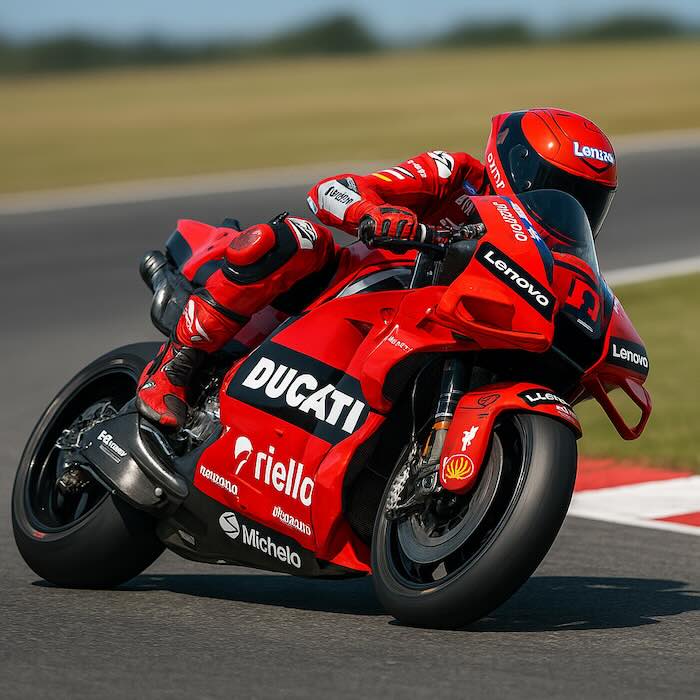MotoGP bikes have 1000cc four-stroke engines.
Each bike is a racing prototype, designed exclusively for competition — not for public roads.
They deliver over 300 horsepower and can exceed 360 km/h on straight sections.

1. Understanding displacement
Engine displacement measures the total volume of all cylinders in the engine.
MotoGP regulations limit this to 1000 cubic centimeters (cc).
Most manufacturers use inline-four or V4 configurations, balancing power and efficiency.
2. Power and performance
MotoGP engines are masterpieces of modern engineering.
They produce up to 300 hp and rev up to 18,000 rpm, pushing riders to extreme acceleration and speed.
With a minimum bike weight of 157 kg, the power-to-weight ratio surpasses even that of Formula 1 cars.
MotoGP specs overview:
- Engine: 1000cc, 4 cylinders
- Power: up to 300 hp
- Weight: 157 kg minimum
- Top speed: over 360 km/h
- Transmission: seamless 6-speed gearbox
- Tires: Michelin race slicks
3. Moto3, Moto2 and MotoGP differences
MotoGP is the top class, followed by Moto2 and Moto3 — where riders develop before reaching the elite level.
| Class | Displacement | Cylinders | Power |
|---|---|---|---|
| Moto3 | 250cc | Single-cylinder | ~60 hp |
| Moto2 | 765cc | Triple | ~140 hp |
| MotoGP | 1000cc | Four-cylinder | ~300 hp |
4. Manufacturers
Top brands competing in MotoGP include:
- Ducati (Italy)
- Yamaha (Japan)
- Honda (Japan)
- KTM (Austria)
- Aprilia (Italy)
Currently, Ducati dominates the grid with the Desmosedici GP, known for its explosive acceleration and aerodynamic efficiency.
MotoGP motorcycles feature 1000cc engines, but their real magic lies in precision engineering and relentless innovation.
They’re the pinnacle of motorcycle technology, influencing production models like the Ducati Panigale V4 and Yamaha R1.
You can’t ride a MotoGP bike on the street — but you can rent a motorcycle in Lisbon and feel the thrill of two wheels, safely and freely.